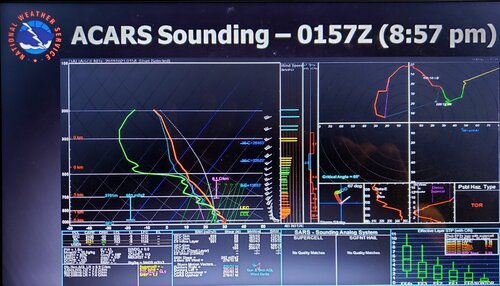Randy Jennings
Supporter
- Joined
- May 18, 2013
- Messages
- 855
Does anyone know what the largest observed Storm Relative Helicity values are? I have searched online and can't find it. NWS Fort Worth is doing a presentation at some of the larger Slywarn training sessions on the Oct 20, 2019 Dallas tornado and it includes an ACARS sounding from an aircraft that took off from Dallas Love Field 1 minute before the tornado (in the inflow region). It measured 1003 m2/s2 SRH in lowest 3km and 883 m2/s2 SRH in the lowest 1 km. They are also going to present this at TESSA this year.


